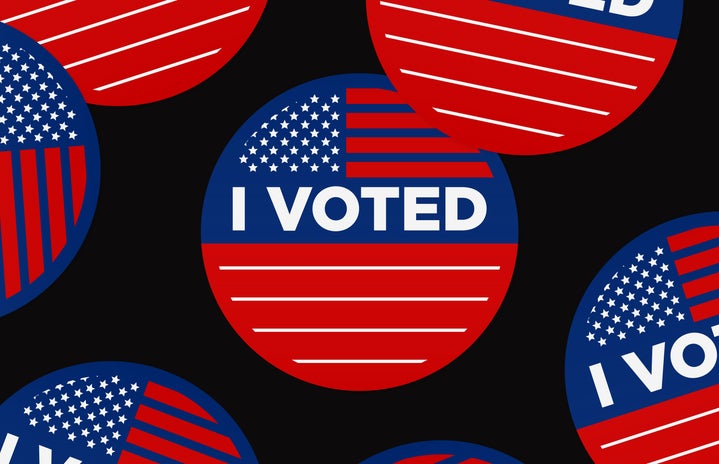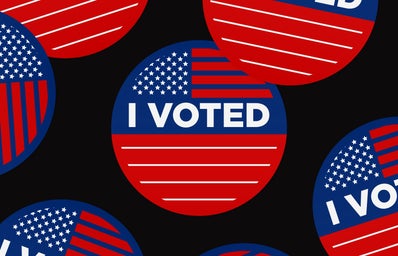It’s been a year since the 2020 presidential election. Due to mail-in voting, the pandemic and Utah counting votes at the pace of a snail, it was one of the more stressful elections we’ve had in recent years. But it was also one of the most historic, as the first ever female vice president was elected. Vice President Kamala Harris has been a great example for young women in America, someone who we can look to and say, “If she can do it, so can I.” But it took 45 presidents and 244 years to get to this point. For almost its entire history, America has been ruled by white men, and while many of our leaders have made substantial progress and impact, this leadership is not at all representative of what the United States actually looks like. Women are told that we can do anything, but when looking at a session of Congress, it’s pretty clear some things are more unattainable than others. When will America be ready to have a female president?
In the 2018 primaries, we saw higher rates of voter turnout and a record-breaking number of female candidates being elected to Congress as well as historic wins for LGBTQ+ candidates. While electing these senators and representatives was a great step forward, unfortunately, they have been made fun of, called names and been vilified by the media and even other U.S. leaders. Representatives Alexandria Ocasio-Cortez, Ilhan Omar, Ayanna Pressley and Rashida Tlaib were nicknamed “The Squad” and “AOC Plus 3” by former president Donald Trump. As women of color, they are criticized especially harshly by the media and their colleagues and have even been told in a tweet from the former president to “go back where they came from”. As well, their policies and ideas are called “too radical” and “too progressive” by political opponents who prefer to demonize them rather than actually consider their ideas. This extreme criticism is also seen against more experienced female members of Congress. The former president has vilified many female senators, especially Elizabeth Warren, Nancy Pelosi and Kamala Harris, constantly using adjectives like “nasty” and “crazy.” While male senators and representatives have been called names and criticized by their colleagues, there tends to be a different tone used when female members of Congress are criticized.
There is an idea that women are crazy, dim-witted and unfit for the job—or that they are too smart, too calculated and have evil, nasty intentions.
These criticisms and prejudices against female leaders—and really, any candidates that are not straight, white males—are especially displayed in presidential elections. In almost every election, the first candidates to drop are members of the LGBTQ+ community, people of color or women. And that is not because they are unfit to lead, but because voters and the media don’t take them seriously. For example, they may not get as much speaking time in debates. Democratic presidential candidates Andrew Yang and Amy Klobuchar consistently had less speaking time in debates and were some of the first candidates to drop out of the race. Meanwhile, Joe Biden, Bernie Sanders, Elizabeth Warren and Kamala Harris typically had the highest speaking times and spoke for at least five more minutes than most of their fellow candidates. If candidates are not identified as a front-runner, it can be difficult for them to gain supporters because there is already a preconceived notion that they won’t last long. In addition, political parties and the electoral college only make it more difficult for candidates who are not straight, white men to succeed. If a political party is trying to find a winning candidate, they are going to choose someone who people from the other party or moderates will swing for. And, simply put, political parties believe people would be less willing to swing for a female candidate. When voters want their political party to win the presidential race, they may vote for the male candidate, the “more palatable” candidate, for the same reason. I have seen this happen in my own hometown in St. Louis County. Male governors, representatives and other politicians have won over their female candidates despite having made controversial decisions while in office that hurt the very people who voted them in. When it came down to it, voters would rather have a leader who they didn’t like or agree with in office rather than a woman.
So, what will it take to get a president who is a woman? Female leaders in America have a variety of answers to this question. Rosa Clemente, who ran with Rep. Cynthia McKinney in the Green party as the first ticket of all-Black women for the presidency, believes that the electoral college would have to be abolished and that Black women could then win the popular vote. Other opinions focus more on how child care programs and abortion rights would allow women to fill more positions of power. Meanwhile, some say that the women’s rights movements in the past few years could be the first step in electing a female president. Overall, though, there is a general consensus that America will see the first female president in Gen X’s lifetime, or at least in the Millennials’ and Gen Z’s time.
In the meantime, the best thing that we can do is believe in and support candidates who break the mold. This is not to say that we should vote for female candidates even if we don’t agree with their policies or beliefs. Rather, we need to take all candidates seriously and not expect that old men will be the front-runners. And we can look up to our leaders for support. Today, we celebrate our vice president; tomorrow, our president.


